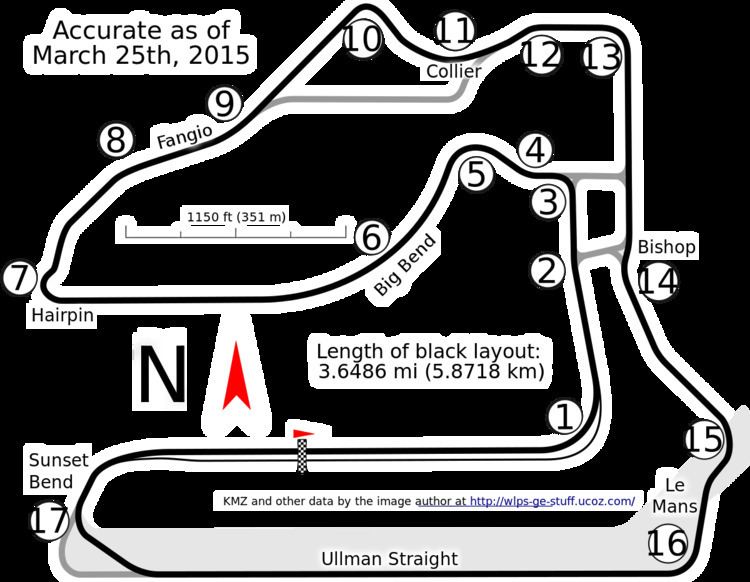First USCC race 2014 Most wins (driver) Tom Kristensen (6) | First race 1950 Duration 12 hours | |
 | ||
The 12 Hours of Sebring is an annual motorsport endurance race for sports cars held at Sebring International Raceway, on the site of the former Hendricks Army Airfield World War II air base in Sebring, Florida. The event is the second round of the United SportsCar Championship and in the past has been a round of the now defunct World Sportscar Championship, IMSA GT Championship and American Le Mans Series. In 2012, the race was the opening event of the FIA World Endurance Championship.
Contents
History
The track opened in 1950 on an airfield and is a road racing course styled after those used in European Grand Prix motor racing. The first race was a six-hour race on New Year's Eve 1950, with the next race held 14 months later as the first 12 Hours of Sebring. The race is famous for its "once around the clock" action, starting during the day and finishing at night. From 1953 to 1972 the 12 Hour was a round of the FIA’s premier sports car series which was contested under various names including the World Sportscar Championship and the International Championship for Makes.
In its early years, the Sebring circuit combined former airport runways with narrow two-lane service roads. The 1966 event was a turning point in Sebring history, as the facilities and the safety of the circuit were heavily criticized. Five people were killed during the race, which was more people killed than in the race's prior 15-year history combined. Bob McLean crashed while approaching the hairpin; his car rolled several times, struck a utility pole and then exploded, landing in a ditch and killing McLean.
In another incident Mario Andretti in his Ferrari 365 P2 tangled with Don Wester's Porsche 906 on the Warehouse Straight near the Webster Turns, killing four spectators and then crashing into a warehouse next to the track. Subsequent to these events, the facilities were upgraded and the circuit layout was changed, including eliminating the Webster Turns and creating the Green Park Chicane further down the track to move the straight further away from the airport warehouses. The circuit was made safer and there were no fatalities until 1980.
It is known as preparation for the 24 Hours of Le Mans, as the track's extremely bumpy surface, combined with south-central Florida's perennial hot weather, is a test of a car's reliability. In recent years, six overall victories have been achieved by the Audi R8, one fewer than the record seven wins of the Porsche 935.
Tom Kristensen has won the race more times than anyone else, with six victories – in 1999–2000, 2005–2006, 2009 and in 2012.
Race results
The 1966 race had Dan Gurney leading at the last lap, when his engine of his Shelby American Ford GT40 Mk II seized near the end. Gurney pushed his car over the finish line, beaten only by Ken Miles and Lloyd Ruby. However, his actions were ultimately determined to be against the rules and he did not receive credit for his finish.
In 2005, the Chevrolet Corvette C6.R and Aston Martin DBR9 made their race debut in the hotly contested GT1 class, with Aston Martin winning its class for the first time in 49 years at Sebring ahead of the two Corvettes. Corvette had dominated the class the past three years with its previous generation C5R.
The all-new Audi R10 TDI won the 2006 edition of the race, the car's first ever run in competition. The victory set the stage for an even more momentous win by the R10 in its next race, the Le Mans 24 Hours later in the year. The much-hyped Porsche RS Spyder campaigned by Penske Racing dropped to take 2nd place in its LMP2 class, behind the Intersport Lola car. The GT1 Corvette C6R team got their revenge against the Aston Martin, although the second Corvette came within 1/3 of a second of the podium in the closing laps of the race.
2007 saw Audi again winning in the R10 TDI despite requiring more frequent refueling due to changes in American Le Mans series rules intended to even the field between gasoline and diesel powered engines. In addition to an overall win, Audi also set a track record in 2007 with Marco Werner behind the wheel in qualifying.
